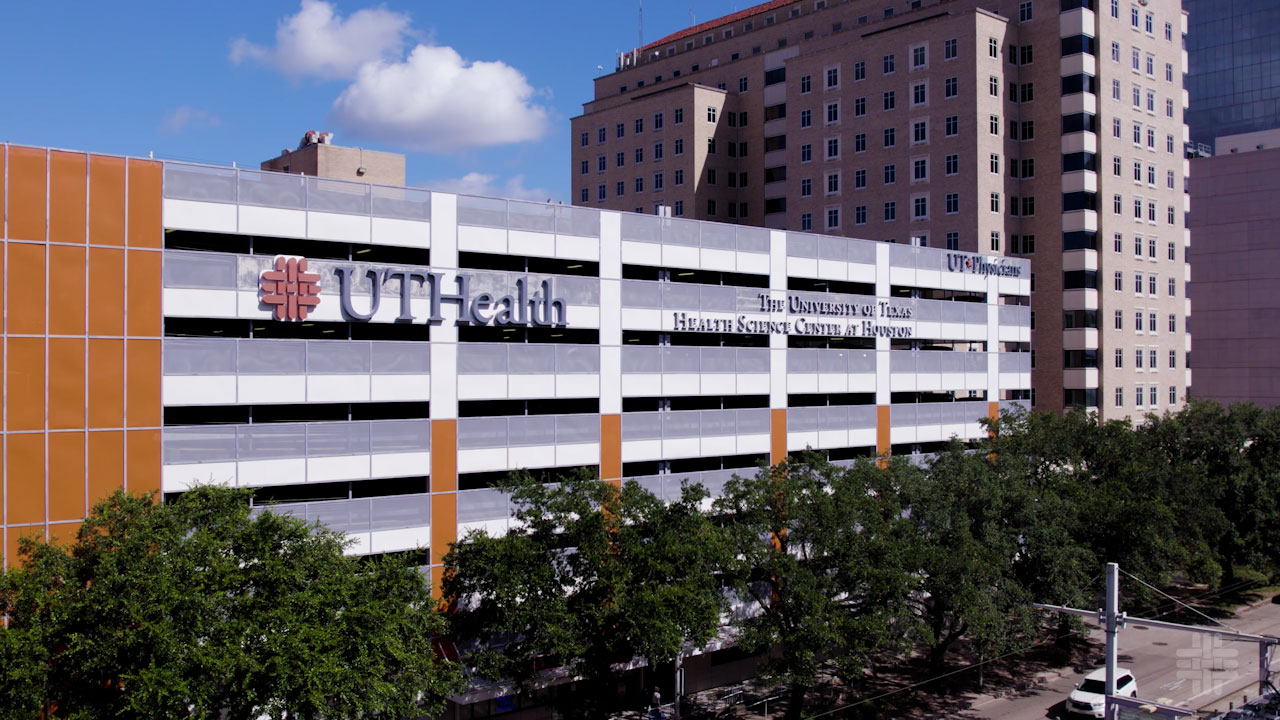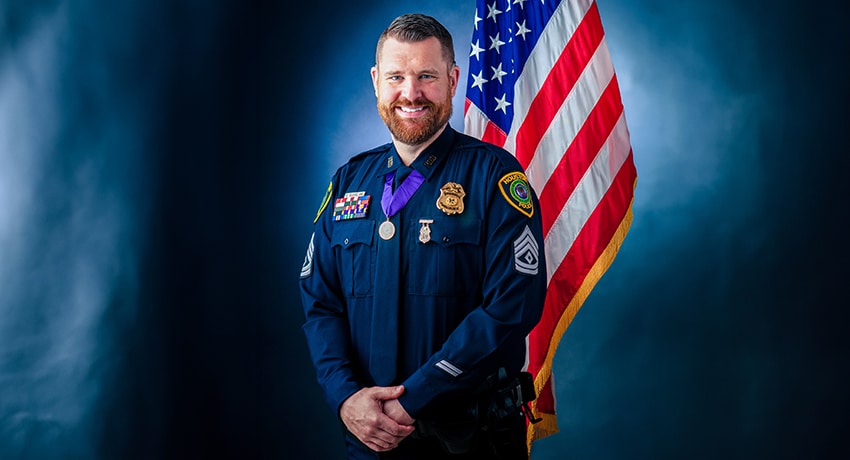Skilled surgeons and massive determination enabled a young Houston police officer to return to duty nearly two years after gunshots could have sidelined his career forever.
“It’s not the hardest thing I’ve come back from,” said Sgt. Sam Cleveland, a 14-year officer with Houston Police Department. “I’ve got a few rounds left in me.”
Cleveland, age 35, was shot in the line of duty in July 2021 while investigating what appeared to be a routine call. The story made local news, describing a complaint in a parking lot that dangerously spiraled into an emergency situation. When Sam and his partner met the suspect, he shot Sam three times at close range. Fortunately, his partner briskly applied a tourniquet while also grabbing the assailant, wrestling the gun out of his hands, and getting him into handcuffs.
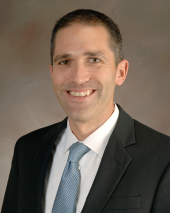
Sam was transferred from Kingwood to the Texas Medical Center as an acute trauma patient where a team of UT Physicians orthopedic surgeons stepped in. Sam arrived with an open humeral shaft fracture and severe bone injury that shattered his humerus, according to Stephen Warner, MD, PhD, orthopedic surgeon and assistant professor in the Department of Orthopedic Surgery at McGovern Medical School at UTHealth Houston.
“Due to the open nature of his fracture, he was at a high risk of infection,” Warner said. “We initially performed a debridement of the fracture site and surrounding soft tissues to minimize the risk.”
Warner rebuilt Sam’s humerus in a tedious procedure that involved plates and 14 screws in his upper arm bone. That needed to heal before some of the other procedures could be done. The surgeons were initially called to manage his gunshot wounds but later discovered his radial nerve was transected by the bullet fragments and prevented him from extending his fingers or wrist.
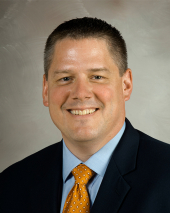
Matthew E. Koepplinger, DO, orthopedic surgeon and assistant professor in the Department of Orthopedic Surgery at McGovern Medical School at UTHealth Houston, was on call when Sam arrived.
“When you’ve got three major nerves in your upper extremity and two of them are badly damaged, it doesn’t bode well that you’re going to have good function,” Koepplinger said. “Or even a lot of motivation to get back to line-of-duty work.”
Koepplinger recommended a tendon transfer versus waiting for “electricity” to start flowing again within the nerves, which could be six to 18 months. The transfer surgery reroutes a working muscle and tendon to replace a non-working muscle and tendon. This provides a more immediate recovery of function, he said, because it starts to work right away. During the process of the tendon transfer, Koepplinger discovered another badly damaged nerve from a gunshot wound and repaired it at the same time.
“Nerves are so unpredictable because they are the one tissue in the body that you really can’t just put back together again, and it starts working,” Koepplinger said.
Reality sets in
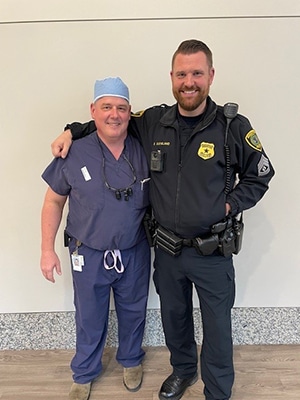
When Sam learned the extent of his injuries, he had many questions, especially regarding finances. What kind of job could he have if he couldn’t even lift his wrist?
“Obviously there were a lot of questions, and it got to the point when I wondered if I should start looking for another job,” Sam said. “For the longest time, Dr. K (Koepplinger) was convinced I wasn’t going to be coming back. But once I made my mind up that I was going back, that’s just the way it was, and I worked for it.”
Koepplinger said Sam was very committed from the beginning and always talked about going back into the line of duty, even though Koepplinger, honestly, didn’t think he had much of a chance. What makes people put themselves into harm’s way, he said, without a second thought? It’s so selfless.
“I tried to lower the bar a little bit, so we didn’t go too far making promises that would be hard to keep with regard to his overall function,” Koepplinger said. “We’re not promising the moon and the stars. I just wanted him to be able to button his shirt. I wanted him to be able to pick up his kids.”
About a week after Sam’s tendon surgery, the department promoted him to sergeant. He had completed a written exam and required assessment earlier in the year. “It wasn’t a ‘pity promotion,’ but just happened to coincide with some pretty rough times, so that was neat,” Sam said. “I got to walk across the stage with my spatula hand!”
Getting physically fit
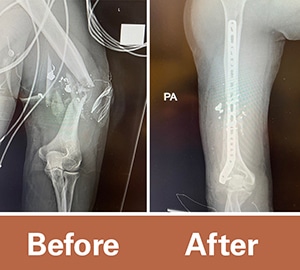
Koepplinger told Sam it would be a minimum of a year and probably more like two years before he would have any semblance of meaningful recovery. There was an unknown of what to expect from the nerve repair surgery and tendon transfers and what his ultimate anticipated function would be.
“He probably shortened that up – it was six months shy of two years before he had demonstrated his physical capabilities to do what he needed to do,” Koepplinger said. “The biggest part of him getting back on the force was making sure he was physically fit.”
Sam completed rigorous sessions of physical therapy three times a week for about six months, along with occupational therapy, and felt like he lived in the clinic. This involved deep tissue massage, breaking up scar tissue, and a lot of joint mobilization.
He later transitioned to a work-hardening program through workers’ compensation that focuses on getting injured workers back into the workforce. A therapist completes a written report that describes performance standards and capabilities.
“Sam had limited elbow, wrist, and finger motion, and we had to work on all of it just to be near functioning,” Koepplinger said. “Requirements to move your fingers and wrist on a normal day-to-day basis are considerably less than what you need to make a full fist or grasp something with some element of strength. And he surpassed all of that.”
During the first year, Sam visited Koepplinger monthly to check in and see if anything needed to be adjusted. They might amend physical therapy and discuss a potential surgery to help things get better. But Koepplinger said Sam would come back and it was working better, and he didn’t actually need surgery. Visits expanded to 6 to 8 weeks apart once Sam got into the work conditioning and higher level of physical fitness.
“I think if you put your mind to wanting to recover, you’ll recover better than if you just assume the work has already been done for you,” Sam said. “The surgeon will give you the tools, but if you don’t have the mindset, you’re not going to get everything out of it.”
Driven to achieve
Houston Police Department (HPD) return-to-work forms required Koepplinger’s estimation of Sam’s capabilities. He said it was more than just checking a box but point-blank questions such as “Can he wrestle a suspect? Can he fight?”
Koepplinger said Sam’s ability to return to HPD’s line of duty is a testament to his ambition, his will to serve, and hard work in therapy. He’s not Superman, he said, but just a fighter. He said lots of people would have left the field altogether.
If you put your mind to wanting to recover, you’ll recover better… The surgeon will give you the tools, but if you don’t have the mindset, you’re not going to get everything out of it.
Sgt. Sam Cleveland, Houston Police Department
“Sam wanted this so badly, more than anything else. He was completely motivated,” Koepplinger said. “He would not accept ‘good enough.’ It’s truly inspiring – his dedication to service and his teammates.”
Sam had luck on his side in a couple of ways: wearing a vest and his partner’s quick thinking. Koepplinger said the body armor Sam wore made a difference and probably saved his life, since it stopped two bullets. A third bullet turned sideways as it penetrated his arm.
Back on the streets
On April 1, 2023, Sam returned to the Houston Police Department on desk duty. He hated it, he said.
“I belong on the street. By end of May, I was feeling pretty good and talked to Dr. K,” Sam said. “At some point, you just have to get back out there and hit the ground running. So that’s what I did.”
Sam described his first day back on the streets June 1 as extremely rewarding, because for the longest time he was questioning if he’d even get to do it again. It was an extremely long recovery process, he said, but he was fortunate to have a supportive employer.
Working together
As a patient, Koepplinger said Sam wasn’t demanding like he was entitled, but demanding from the standpoint that “we’ve got to make this thing work better.” Koepplinger said he realized they needed to refocus goals because his goal for him was to keep his arm and hopefully have it work well for normal activities. Sam’s goals were lofty.
“He just has this mentality that convinces you this is possible,” Koepplinger said. “He keeps coming back and showing how he can do something else. It was just phenomenal, and I was absolutely blown away.”
Sam said Koepplinger was an extremely gifted surgeon and always open to different approaches and willing to try something that Sam thought might work during the recovery process. He described him as supportive and advocating for him the entire time. “I can’t think of a better surgeon for me to have with my personality type,” Sam said, laughing.
